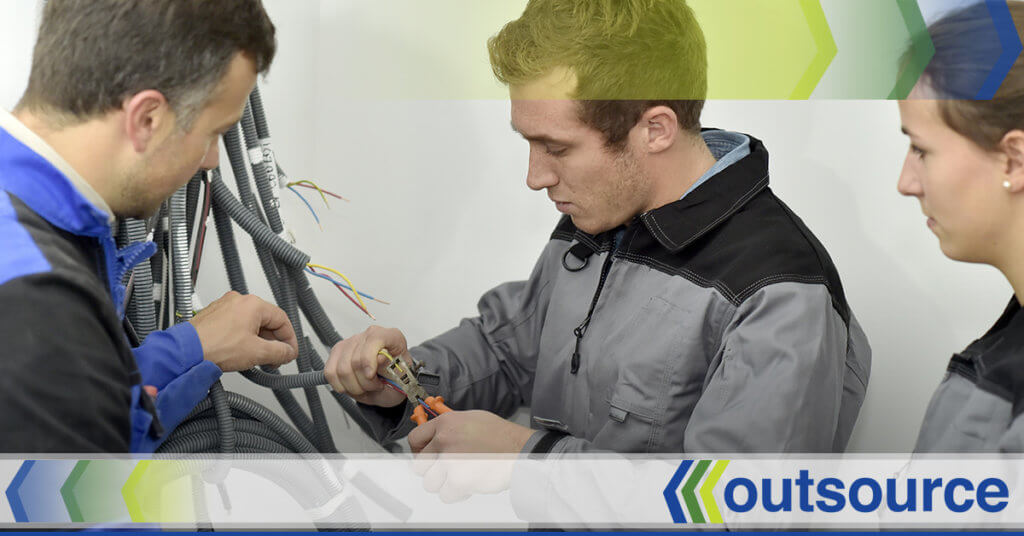Are you debating over whether you should be frugal and install Cat 5 Ethernet cabling, upgrading to the faster Cat 5e, or investing in the gigabit certified Cat 6 for your home, commercial office network, or data center? Structured cabling contractors install voice and data cabling systems and understand the level of performance that can be expected from Cat 5, Cat5e, Cat 5E, and Cat 6 cable. Today we’re taking a closer look at all three of these options and breaking down their functions and features to better help you make your decision.
When faced with the option of deciding what type of network cabling to install for your network, a networking novice might not have an understanding as to what the differences are between the three similarly sounding Ethernet cables. While it is important to understand your choices, we strongly recommend consulting a network cabling contractor before making a final decision.
To get to the root of the problem we need to define exactly what each version of the Ethernet cabling has been designed to do.
Cat 5
The most basic type of network cable is Cat 5 and it comes in two varieties. SCTP or Screened Twisted Pair which is mostly used in Europe and UTP or Unshielded Twisted Pair which is what is commonly used in the United States. The difference between the two is that SCTP has an extra layer of shielding to protect from interference.
Cat 5 voice and data cable comes in either a solid or stranded version with the solid being stiffer and better for transmitting over a long distance, while stranded Cat 5 cable is bendable and used for standard patch cable. Cat 5 cable can support up to 100 Mbps of Ethernet and for up to 100 meters or 328 feet.
Cat 5e
The biggest difference between Cat 5 cable and Cat 5e cable or Category 5 enhanced cable is that Cat 5 cable achieves a greater standard of data transmission. This is why structured cabling contractors have all but replaced Cat 5 cable with Category 5e in all new voice and data cable installations.
Cat 5e cable can handle data transfers up to 1000 Mbps which makes it suitable for Gigabit Ethernet. In addition, Cat 5e cable was designed to have a better resistance to near-end crosstalk or interference.
Cat 6
The most advanced cable of the three is Category 6. As the numbering entails Cat 6 calbe is the latest and best performing version of structured cabling available.
Category 6 network cables are made up of four twisted sets of copper wire and its abilities surpass the other two types of data cabling because Cat 6 cable has a structural difference in its longitudinal separator. In plain English this separator insulates each of the pairs of wire from one another, which in turn decreases possible crosstalk permits faster data transfers. Another advantage this gives Category 6 cable is that it now has double the bandwidth of regular Cat 5 cable.
Cat 6 cable supports up to 10 Gigabit Ethernet for up to about 37 meters or 121 feet. Now, not to make it any more confusing there is a Cat 6a version available that addresses the limit of distance and is certified for up to 100 meters or 328 feet.
Now that we have a better understanding of what each of the three cable types were designed handle, we can now begin to answer the question of which one you should be using for your structured wiring needs..

First, when trying to decide either Cat 5 cable or Cat 5e cable, the smart choice is to go with the latter. The fact that Cat 5e cable is rated at 350 MHz compared to Cat 5 cable which is only rated at 100 MHz is one selling point. Another is that Cat 5e cable will support Gigabit Ethernet and is not only backwards compatible but with the advancements in reducing the loss of signal from “bleeding” makes it hands down the better cable.
Now when deciding whether to upgrade from Cat 5e cable to Cat 6 cable there are some other factors to take into consideration. For example, are all your components rated to supports Gigabit Ethernet? If not, then you won’t be achieving true gigabit speeds and might as well just go with the Cat 5e. Unless you plan to upgrade your components in the future then Cat 6 cable will provide a better infrastructure for these planned upgrades.
In addition, while Cat 5e cable can support gigabit speeds only Cat 6 cable is certified to handle speeds up to 10 Gigabits. However, unless you’re in an environment that has a server with a tremendous amount of data constantly being transferred between machines then an upgrade to Cat 6 structured cabling might not be necessary.
It should be noted that CAT 6 has more twists per inch than Cat 5e and these “twists” in each pair of copper line allows any crosstalk to be cancelled out by the cables partner. In addition, the upgraded copper process used in creating Cat 6 cable has been designed to produce fewer impurities which make for enhanced conductivity.
Which category of voice and data cable are you using and if it needs to be upgraded will you go with Cat 5e or Cat 6?
Structured cabling contractors have the experience and knowledge to guide you when you have questions or concerns regarding the installation, upgrade, or expansion of your voice and data network.
Discover The Power of Real Partnership
Let's talk about the world of possibilities and how we can partner to make them a reality.
Our Latest Resources
What's new in the world of work? Check out the latest highlights, including staffing trends, top insights and more.
Be Ready to Answer These Questions at Your Next Job Interview
Whether this is your first job interview or you've done several already, you will probably find yourself with a case of nerves as it begins...
Maneuvering Your Job Search Through a Pandemic
A global pandemic means times are uncertain, stressful and even a bit frightening. While the COVID-19 outbreak has not only caused a health crisis it has also caused an economic crisis as well...



